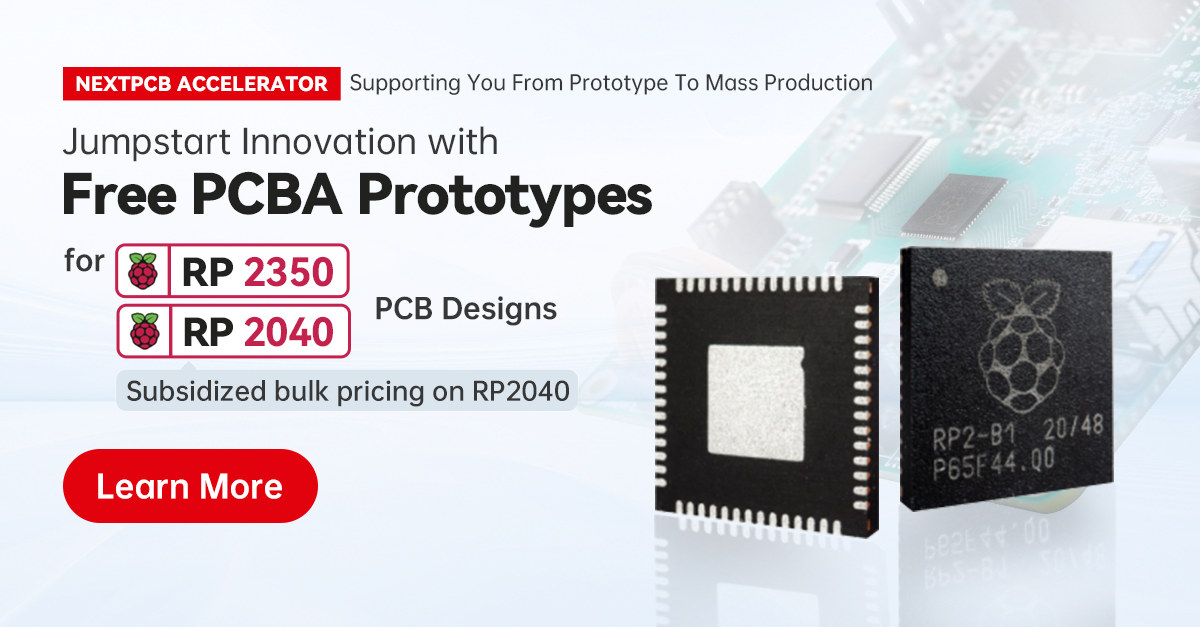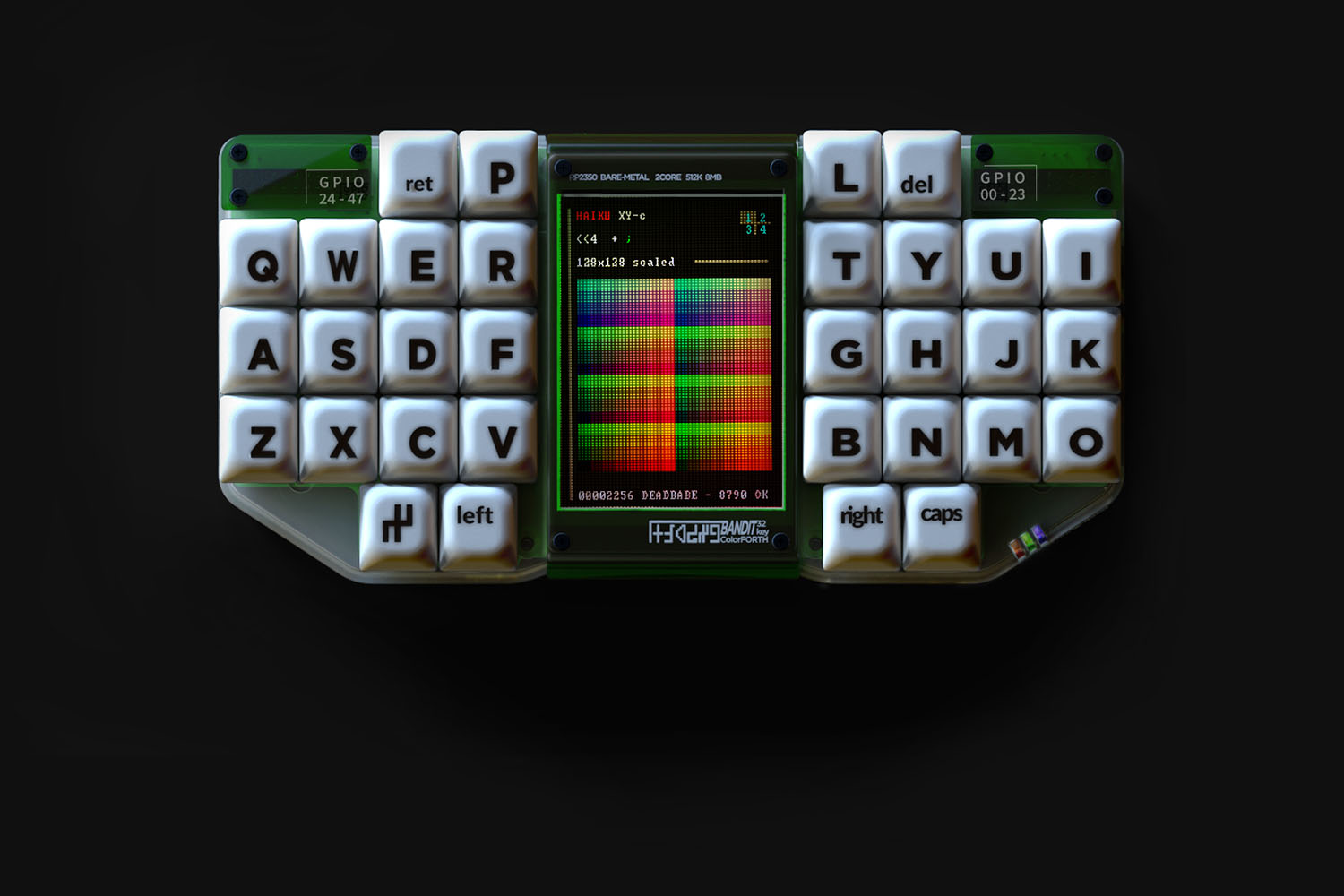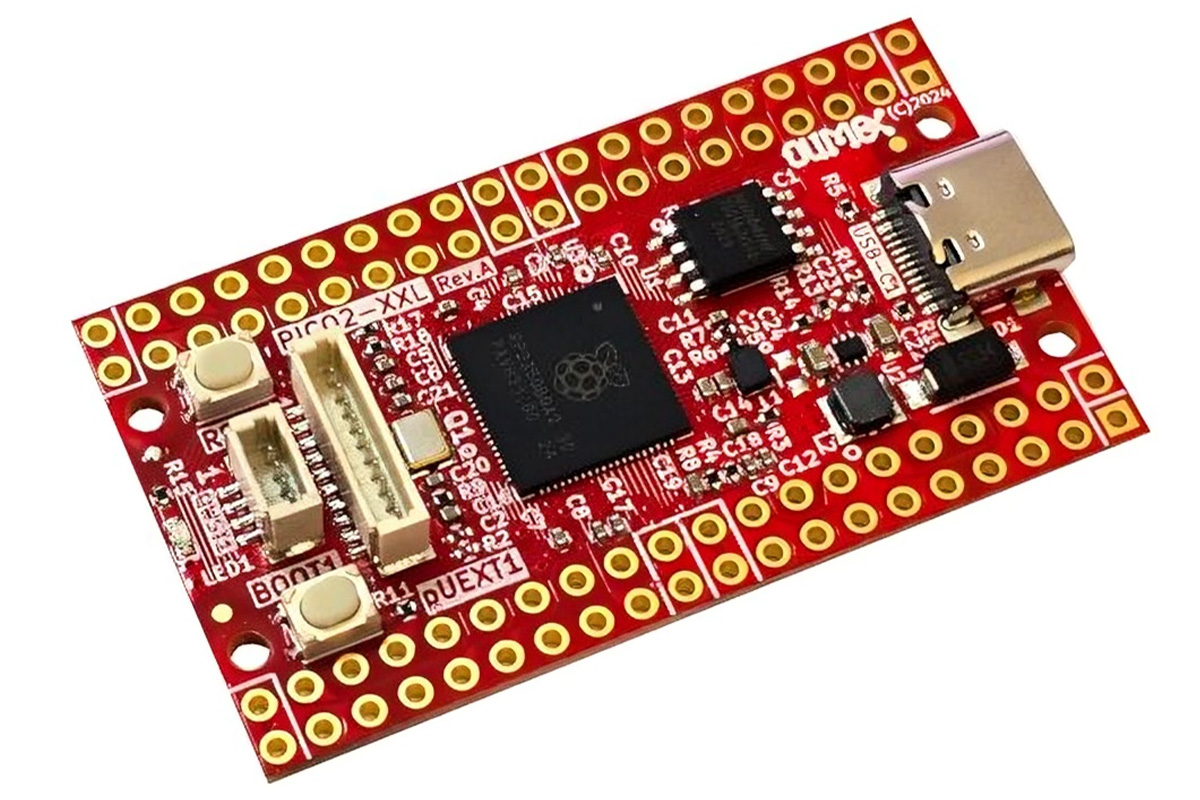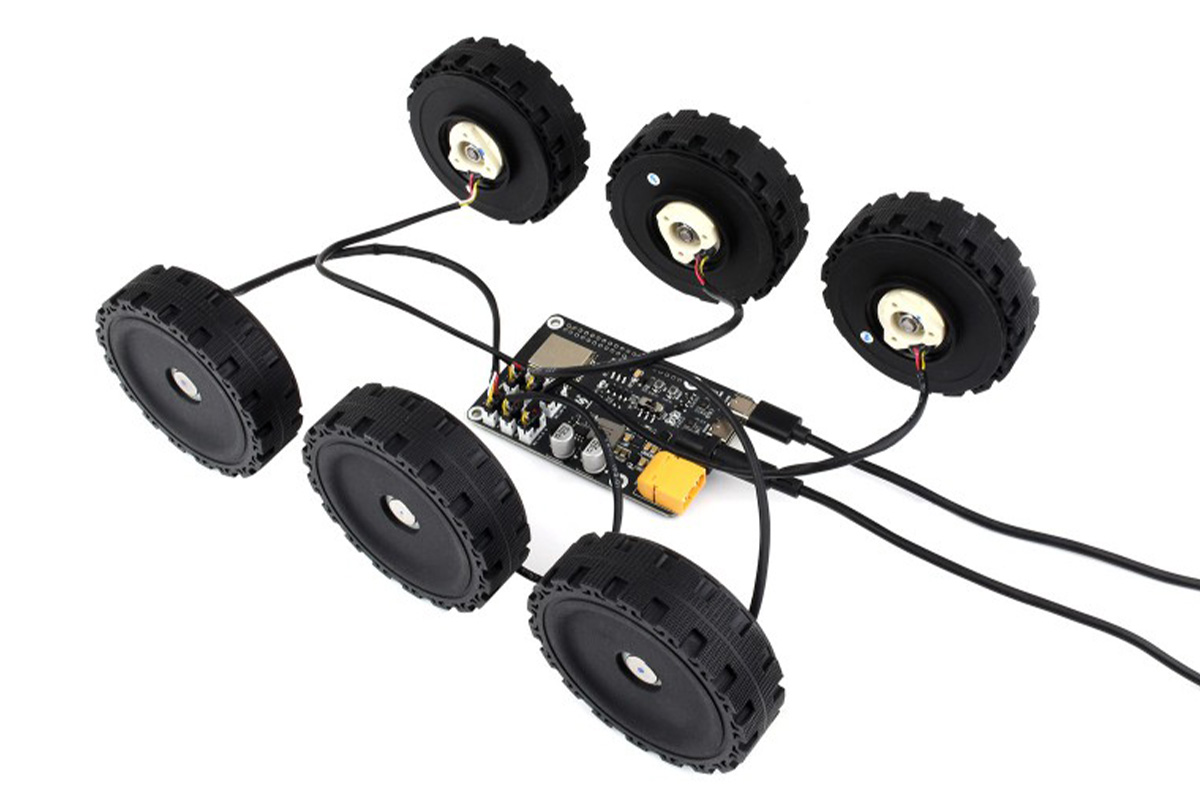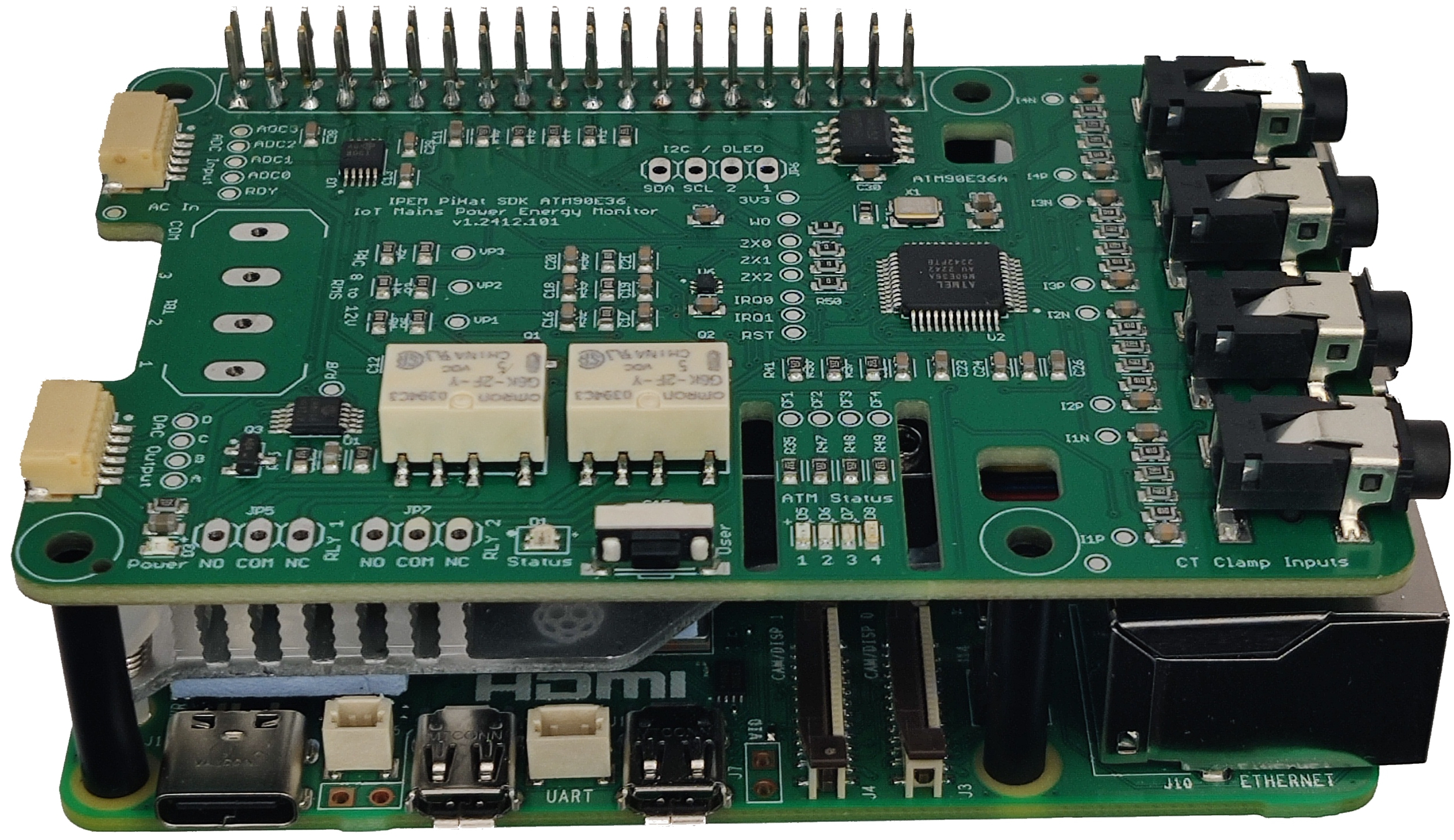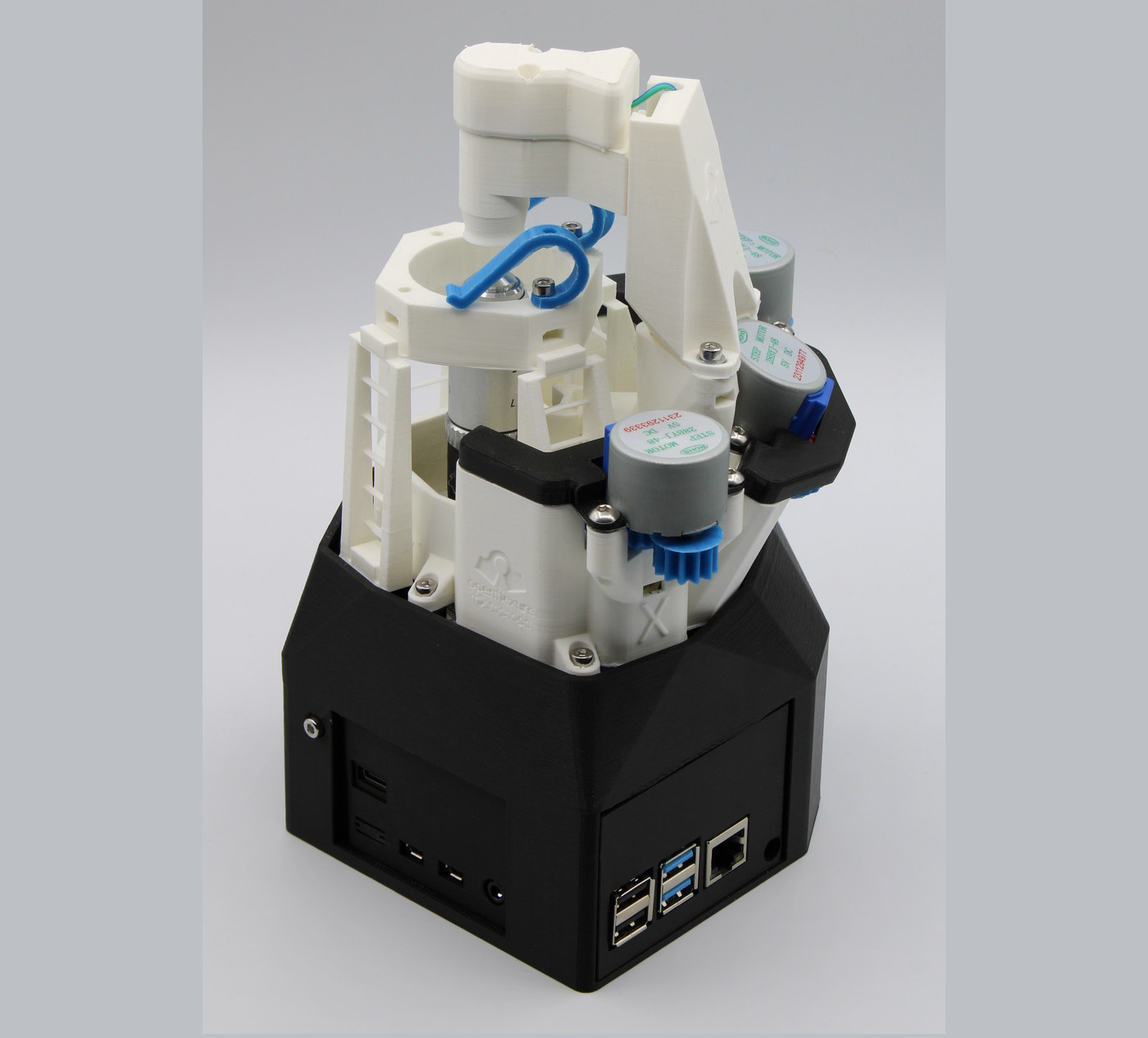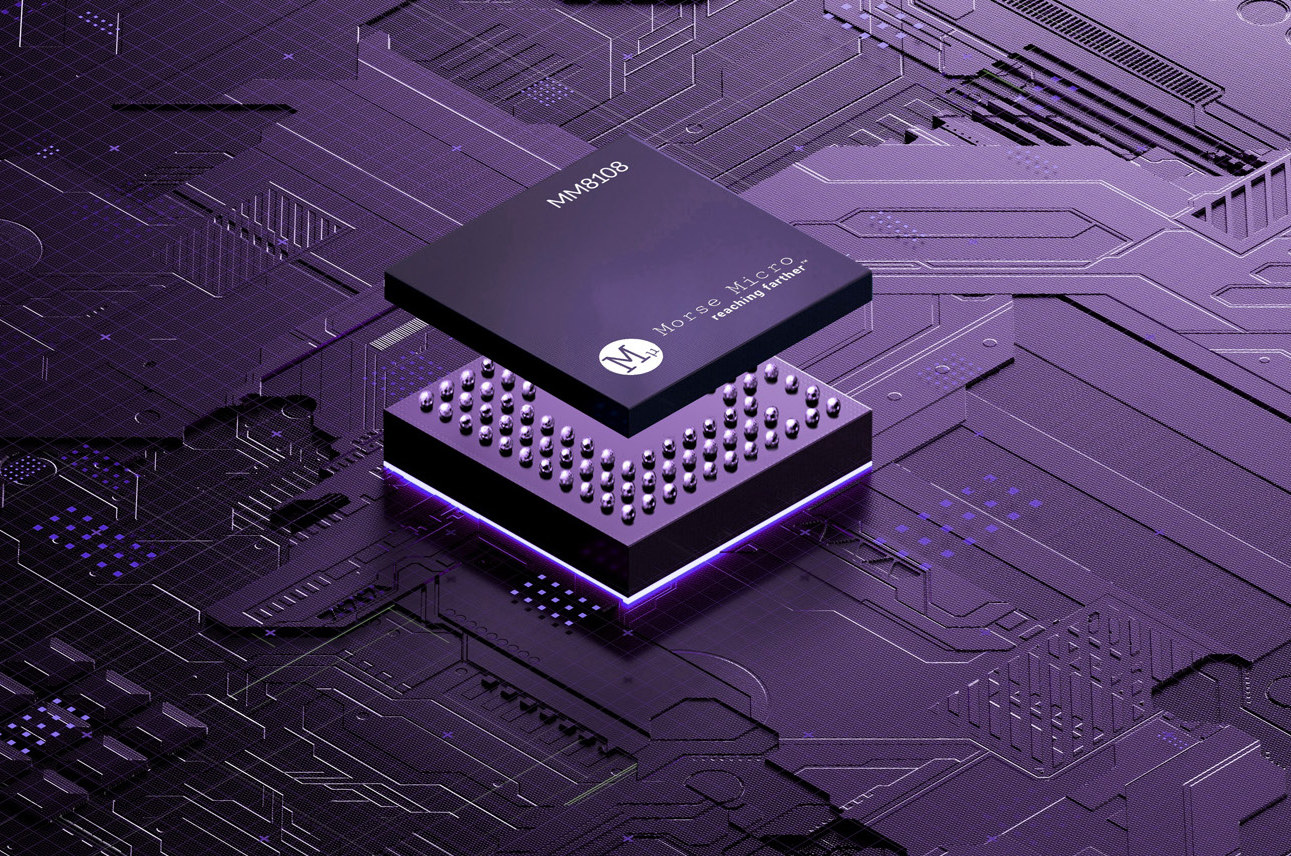NextPCB Accelerator is an initiative from the PCB and PCBA manufacturer to empower innovators and creators to bring their ideas to life, and the ongoing campaign features the Raspberry Pi RP2350 and RP2040 microcontrollers. Specifically, NextPCB offers two free PCBA prototypes for any original design based on either the RP2350 Cortex-M33/RISC-V microcontroller or RP2040 Arm Cortex-M0+ MCU from Raspberry Pi. The company also offers subsidized bulk pricing for the Raspberry Pi RP2040 for any company or maker mass-producing their design with NextPCB. Besides PCB manufacturing, NextPCB will offer professional assembly of the RP2040 or RP2350 chips using their precision pick-and-place machines, advanced automated inspection equipment, and carefully controlled manufacturing practices. NextPCB’s IC programming and firmware burning services will free up time for customers, and functional testing services will make sure all prototypes are tested for functionality before leaving the production line. The conditions of the offer are pretty straightforward. NextPCB […]
BANDIT PC32 standalone ColorForth keyboard computer is powered by the Raspberry Pi RP2350 microcontroller
BANDIT PC32 is a Raspberry Pi RP2350-powered keyboard computer that runs a graphically-oriented version of the ColorForth programming environment. The BANDIT PC32 is primarily aimed at on-the-go use for programming video games. The custom, 32-key split keyboard takes up most of the build, with a 3.2-inch 320 x 240 capacitive display in the center. It also features an HDMI port for connecting a larger external display. The 48-pin GPIO is divided into two female headers and can be used to interface with other devices directly. This is the second version of the Bandit standalone computer, building on an early prototype based on the RP2040 microcontroller. We have seen several interesting RP2350-based products like the Inky Frame 7.3”, 4D Systems display modules, and Jumperless V5 programmable breadboard. However, this is the first RP2350 standalone computer we have come across. It shares some similarities with the ESP32 Rainbow. BANDIT PC32 ColorForth specifications: […]
Open hardware RP2350B boards offer up to 16MB flash, 8MB PSRAM, microSD card slot, 48x GPIOs
Olimex has recently released the PICO2-XL and PICO2-XXL open-source hardware RP2350B development boards with up to 16MB flash, 8MB PSRAM, 48 GPIOs, a microSD card slot, and more. The main difference between the two boards is that the PICO2-XL includes 2MB of external QSPI Flash and a compact flat-bottom design, making it ideal for simpler, space-constrained projects. In contrast, the PICO2-XXL offers 16MB of QSPI Flash, 8MB of PSRAM, and a microSD card slot for expanded storage and performance, catering to more demanding applications like IoT and edge computing. Olimex PICO2-XL and PICO2-XXL specifications SoC – Raspberry Pi RP2350B MCU CPU Dual-core Arm Cortex-M33 @150MHz with Arm Trustzone Dual-core 32-bit Hazard3 RISC-V @ 150MHz Up to two cores can be used at the same time Memory – 520KB SRAM 8kB OTP storage Security – Secure boot Package – QFN-80; 10×10 mm Memory – 8MB PSRAM (PICO2-XXL only) Storage PICO2-XL – […]
ESP32-based Waveshare DDSM Driver HAT (B) for Raspberry Pi supports DDSM400 hub motors
Waveshare has recently launched DDSM Driver HAT (B), a compact Raspberry Pi DDSM (Direct Drive Servo Motor) motor driver designed specifically to drive the DDSM400 hub motors. This board is built around an ESP32 MCU and supports wired (USB and UART) and wireless (2.4GHz WiFi) communication. Additionally, the board features a physical toggle switch, which lets it choose between the ESP32 control or USB control modes. On ESP32 control mode you can control the device through a built-in web application. In the USB control mode, the motor driver can be controlled via USB from a host computer sending JSON commands. An XT60 connector is used to power the board, and programming is done through a USB-C port that connects to the ESP32. The board is suitable for robotics projects, especially for mobile robots in 6×6 or 4×4 configurations. Waveshare DDSM Driver HAT (B) specifications: Wireless MCU – Espressif Systems ESP32-WROOM-32E ESP32 […]
Ditronix’s IPEM PiHat turns your Raspberry Pi into a mains power energy monitor (Crowdfunding)
The IPEM PiHat is a HAT (Hardware Attached on Top) board for the Raspberry Pi that turns the single-board computer into a mains power energy monitor with four CT clamps. It provides an accurate way to track energy usage in home, office, and solar energy systems and is compatible with single-phase, two-phase, and three-phase electrical systems. The Raspberry Pi-based power energy monitor uses CT (current transformer) cable clamps to sample and measure data which can be used to report and analyze electric energy usage. This data can be used to save and divert energy to reduce costs and inefficiencies. The system is easy to set up and does not require a professional electrician. It uses a CT current clamp clipped over the building’s main power cables and connected to the local mains circuit for voltage and frequency measurement. The add-on board comes in two variants: IPEM PiHat and IPEM PiHat […]
OpenFlexture Microscope is an open-source, 3D-printed microscope based on Raspberry Pi 4 SBC and Camera Module v2
The OpenFlexture Microscope is a DIY, open-source, 3D-printed microscope built around the Raspberry Pi 4, a Raspberry Pi Camera Module v2, and a choice of optics or various qualities up to lab-grade optics. It can be motorized using low-cost geared stepper motors and can achieve a resolution of up to around 100 nanometers I found out about the OpenFlexture Microscope in one of the sessions at the upcoming FOSDEM 2025 event whose description partially reads: The OpenFlexure Microscope is an open-source laboratory-grade digital robotic microscope. As a robotic microscope, it is able to automatically scan microscope slides creating, enormous multi-gigapixel digital representations of samples. The microscope is already undergoing evaluation for malaria and cancer diagnosis in Tanzania, Rwanda, and the Philippines. As an open project, our key goal is to support local manufacturing of microscopes in low-resource settings. [..] high-quality consistent documentation has enabled thousands of microscopes to be built […]
Morse Micro MM8108 WiFi HaLow SoC supports up to 43.33 Mbps transfer rate, improves range and power efficiency
Morse Micro MM8108 is a new WiFi HaLow (802.11ah) SoC with a throughput of up to 43.33 Mbps, and improved range and power efficiency compared to its predecessor the Morse Micro MM6108 introduced in 2022 and supporting up to 32.3 Mbps transfer rate. The new chip is also smaller at just 5x5mm in a BGA package instead of 6x6mm in a QFN48 package for the MM6108/MM6104, adds a USB 2.0 host interface besides SDIO 2.0 and SPI, as well as a MIPI RFFE (Radio Frequency Front-End) for integration and interoperability with multi-radio systems. Morse Micro MM8108 specifications: 32-bit RISC-V Host Applications Processor (HAP) Single-Chip IEEE802.11ah Wi-Fi HaLow transceiver for low-power, long-reach IoT applications Worldwide Sub-1 GHz frequency bands (850MHz to 950MHz) On-chip 26 dBm power amplifier with support for external FEM (Front End Module) option 1/2/4/8 MHz channel bandwidth for up to 43.3 Mbps data rate using 256-QAM modulation at […]
Raspberry Pi 5 edge AI computer ships with 8GB RAM, Hailo-8 AI module, supports Frigate NVR
Seeed Studio’s reComputer AI R2130-12 is an Edge AI computer with a Raspberry Pi 5 SBC with 8GB RAM and a Hailo-8 module with 26 TOPS of AI performance, suitable for video analytics, machine vision, and intelligent edge computing. The computer comes with a HAT+ with two M.2 sockets, one occupied by the Hailo-8 AI accelerator and the other available for an M.2 NVMe SSD. In some ways, it’s just a nicely packaged Raspberry Pi 5 SBC with Hailo-8 AI accelerator that we reviewed last year. reComputer AI R2130-12 specifications: SBC – Raspberry Pi 5 with 8GB RAM AI Processor – Hailo-8 M.2 AI accelerator module with 26 TOPS Storage microSD card slot, with support for high-speed SDR104 mode Optional M.2 NVMe SSD via M.2 PCIe 3.0 slot Video Output – 2x micro HDMI ports up to 4Kp60 Camera/Display I/F – 2x 4-lane MIPI camera/display transceivers Networking Gigabit Ethernet RJ45 […]


